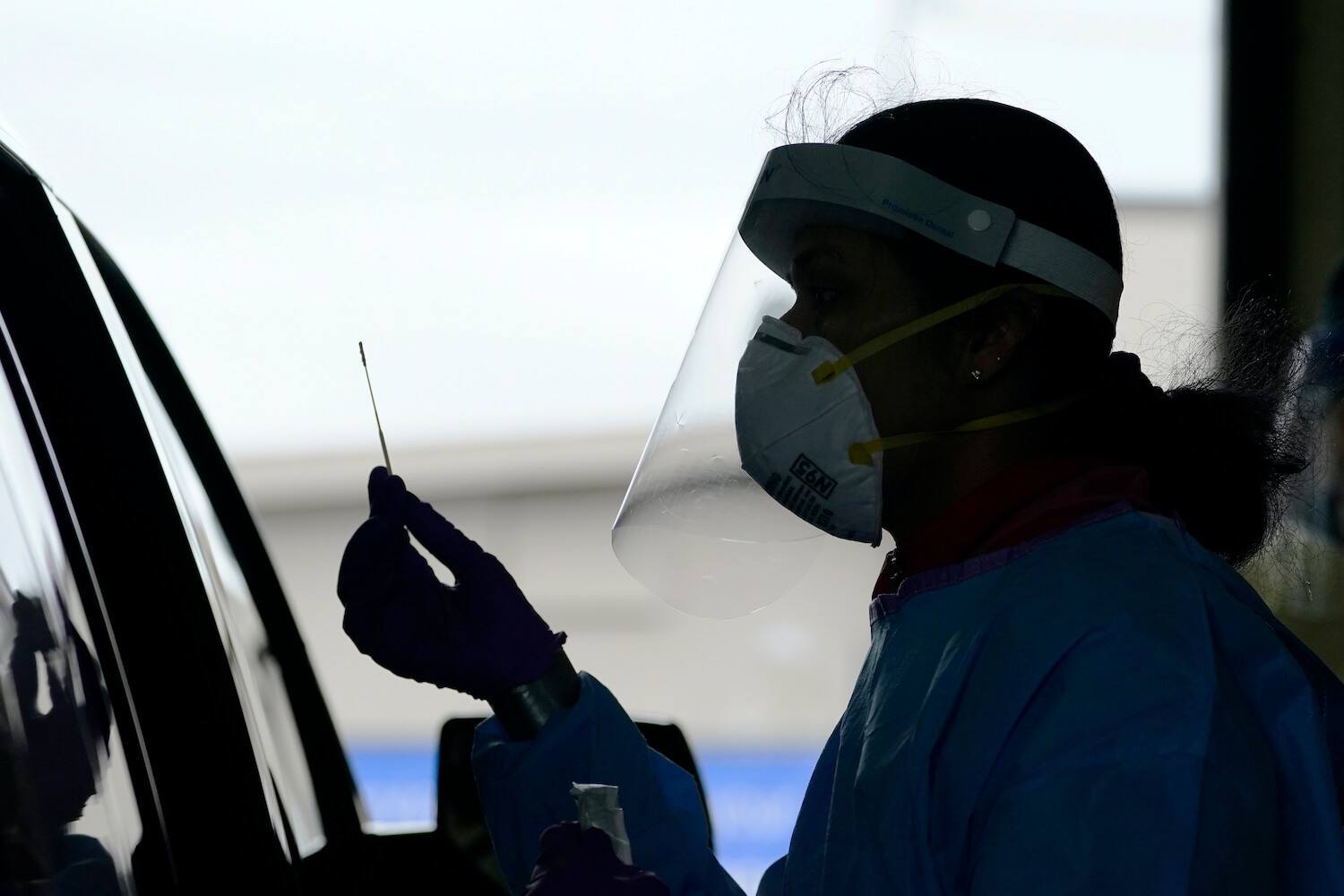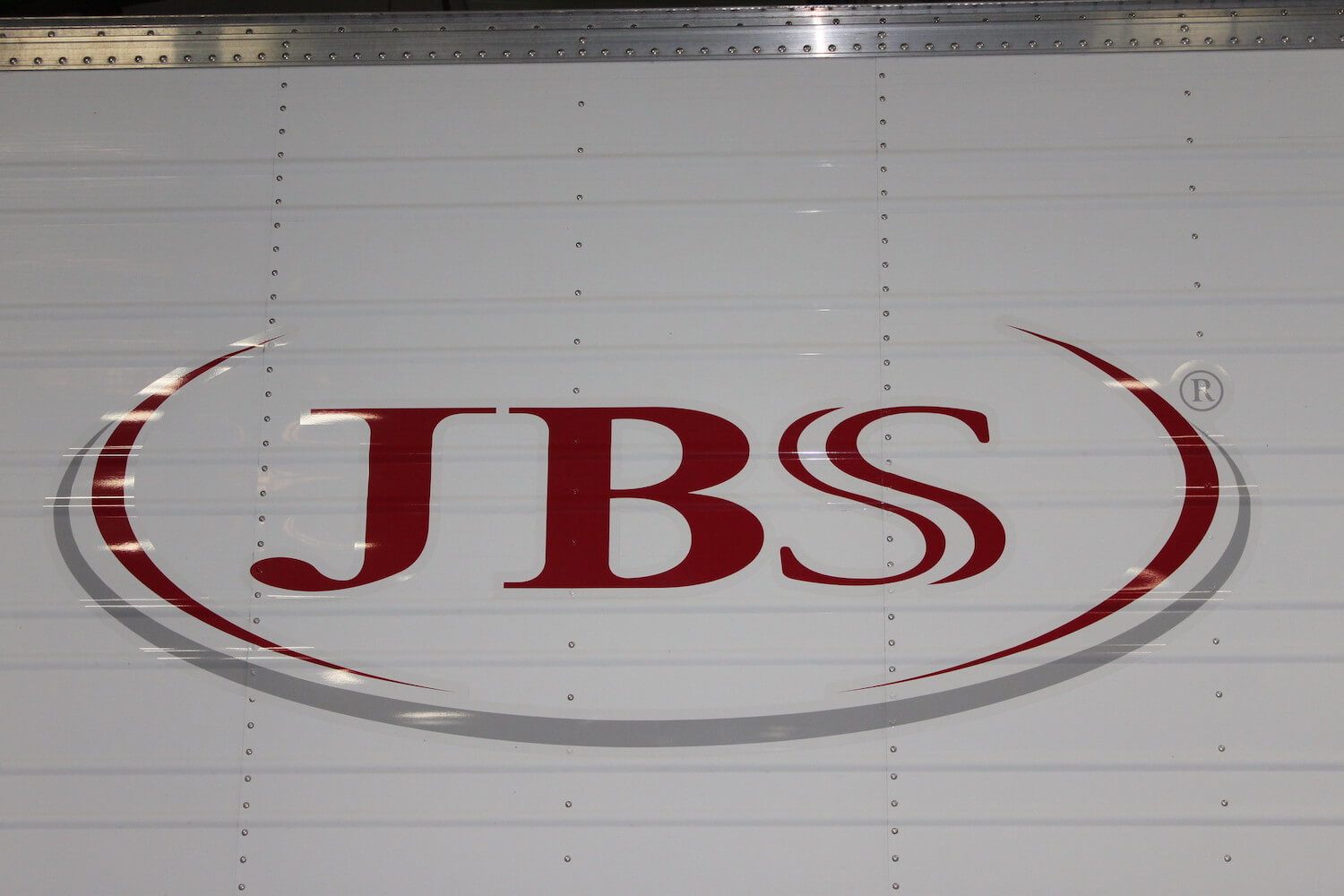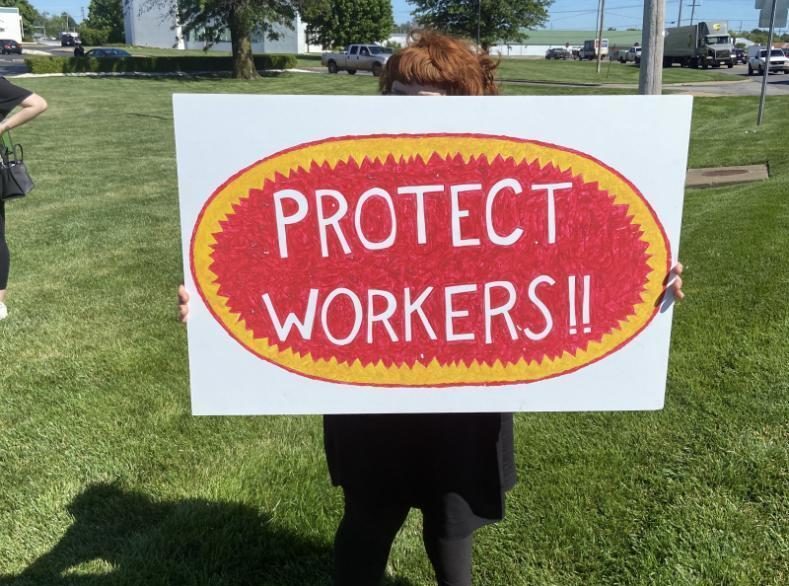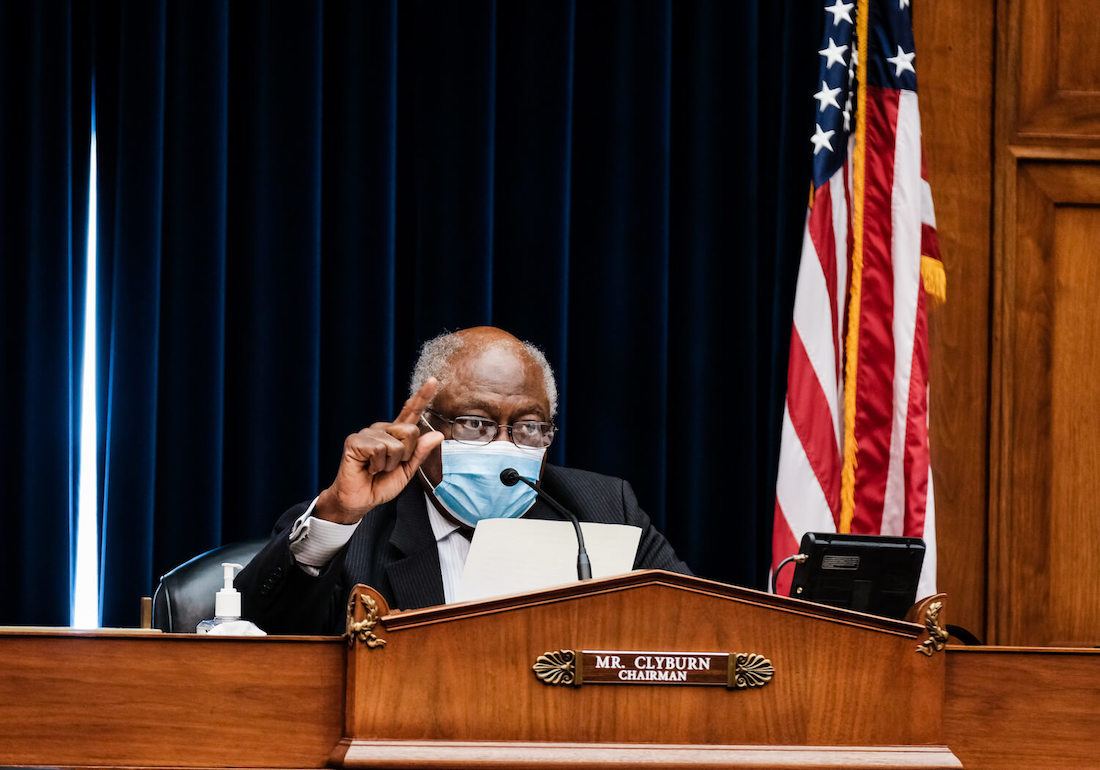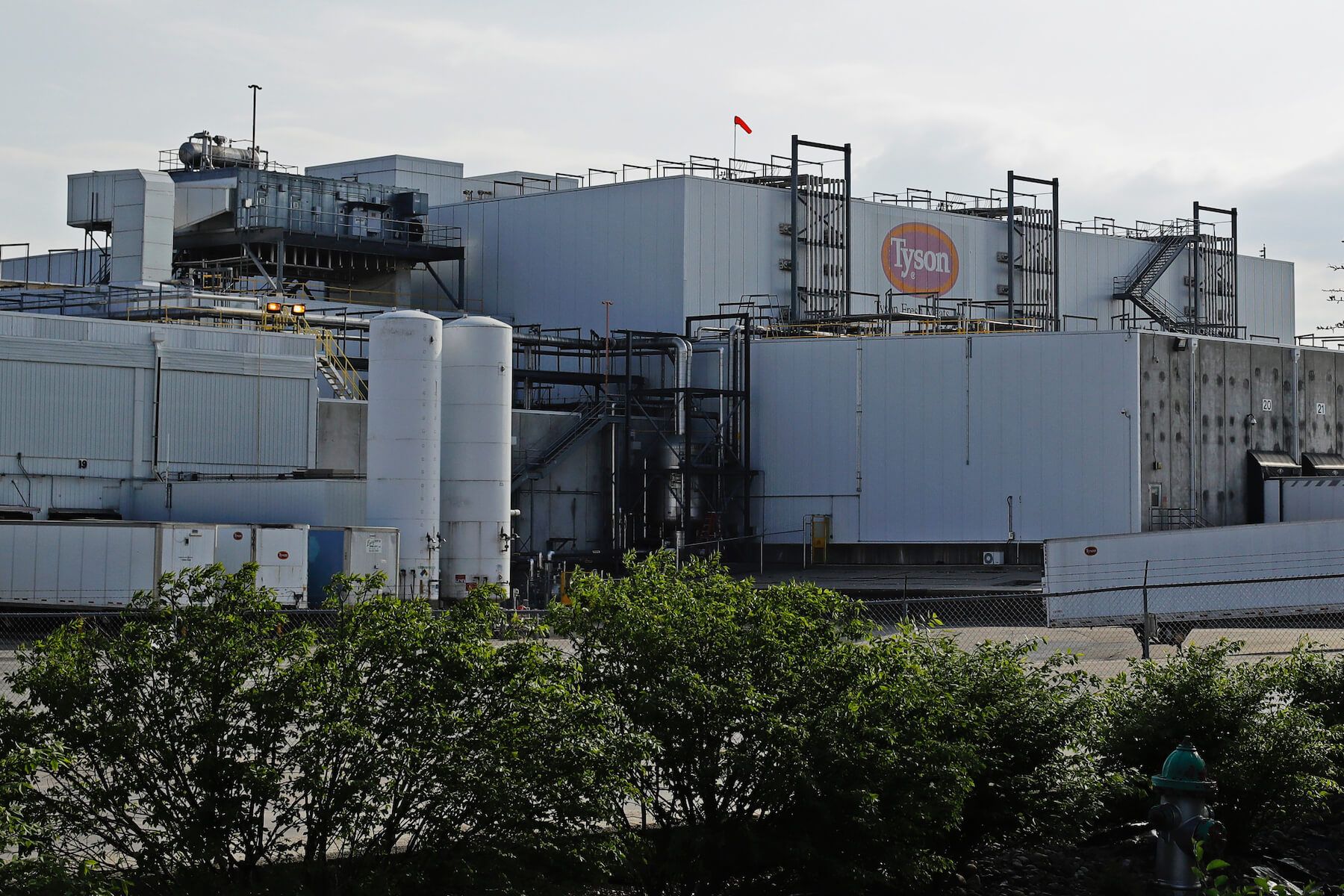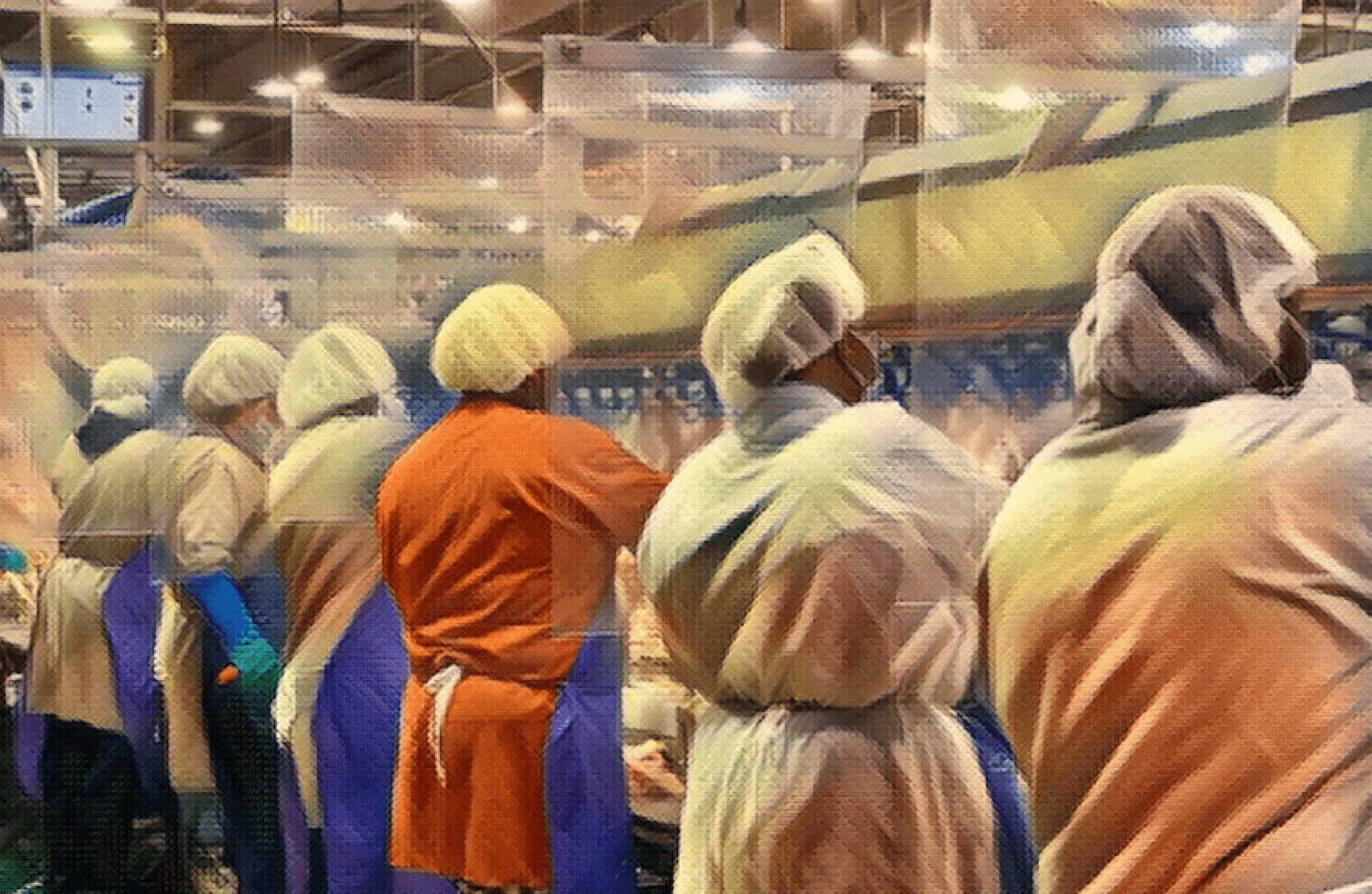
Investigate Midwest
About 30% of Tyson Foods’ workforce has received the coronavirus vaccine. But cases are still being reported across the country, and at least one worker died last month.
One year after Covid-19 infiltrated the meatpacking industry and sparked nationwide plant closures, meat shortage fears and an executive order to keep production lines going, frontline workers continue to face risk.
This article is republished from The Midwest Center for Investigative Reporting. Read the original article here.
Since last April, more than 50,000 cases have been tied to the meatpacking industry, and at least 248 workers have died, according to tracking by the Midwest Center for Investigative Reporting.
The industry is especially vulnerable to the coronavirus because the same features that allow a steady churn of cheap meat also provide the perfect breeding ground for airborne diseases: a cramped workplace, a culture of underreporting illnesses, and a cadre of rural, immigrant and undocumented workers who often live and work together because few other jobs are available.
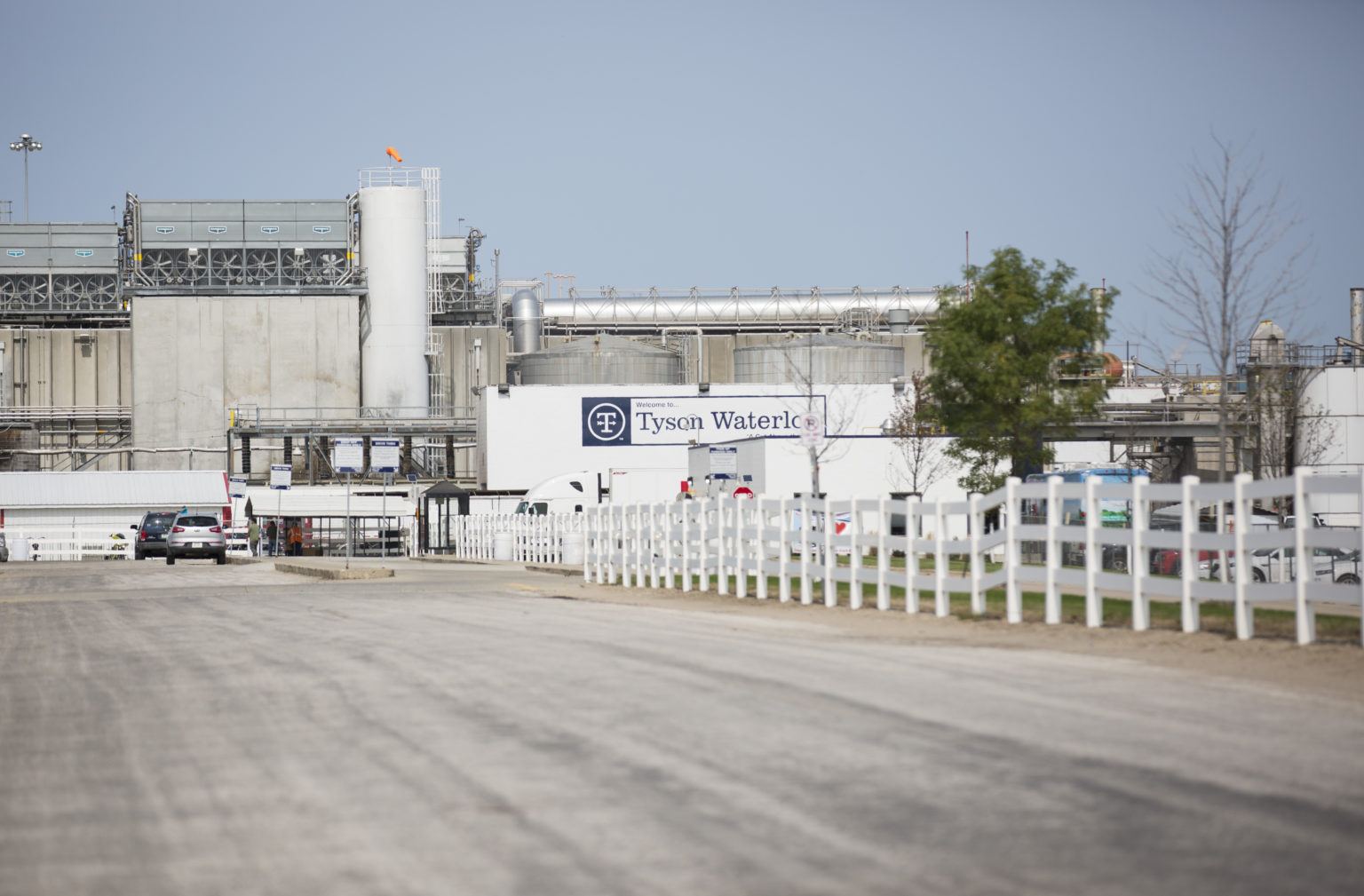
Tyson Fresh Meats plant in Waterloo, Ia., on Sept. 17, 2020. Photo by Kelly Wenzel/for The Midwest Center for Investigative Reporting.
Kelly Wenzel/for The Midwest Center for Investigative Reporting
Coronavirus case counts related to meatpacking have fallen since last year amid an industrywide effort to protect workers and the more recent national vaccine rollout. But many facilities still harbor the disease. More than 200 cases were been reported in North Carolina in the past couple months alone, according to state data. And at least one worker died as recently as March.
The new Biden administration has promised tougher standards than those implemented under former President Trump, but they haven’t yet been implemented. Accountability, meanwhile, is lacking.
“As the pandemic continues, America’s essential food workers continue to face daily Covid risks on the frontlines in meatpacking and food processing plants across the country,” said Marc Perone, the president of the United Food and Commercial Workers International Union, in a press release. The UFCW represents many meatpacking workers.
The union has worked to expand vaccine access to help “prevent the deadly outbreaks we saw last year and keep our food supply secure as this crisis continues,” he said.
Workers who for months have pinned their hopes on vaccines and a new administration still face a dangerous job.
Minorities, meanwhile, have largely shouldered the burden. About 90% of infected meatpacking plant workers were people of color, according to the latest data from the Centers for Disease Control and Prevention.
These are the same groups struggling to get vaccinated. Minorities and people who speak limited English – a population that staffs meatpacking plants – were less likely to have received vaccines in the first three months of 2021, according to a CDC study released in late March.
Workers who for months have pinned their hopes on vaccines and a new administration still face a dangerous job.
President Joe Biden gave the Occupational Health and Safety Administration a mid-March deadline to decide if it should implement of an “emergency temporary standard” to combat coronavirus in the workplace, including meatpacking plants. This is after OSHA took a hands-off approach to oversight of safety standards during the Trump administration.
But the agency has blown through the deadline with no word of its decision.
“OSHA has been working diligently to consider what standards may be necessary,” a Department of Labor spokesperson told USA TODAY and the Midwest Center, “and is taking the time to get this right.”
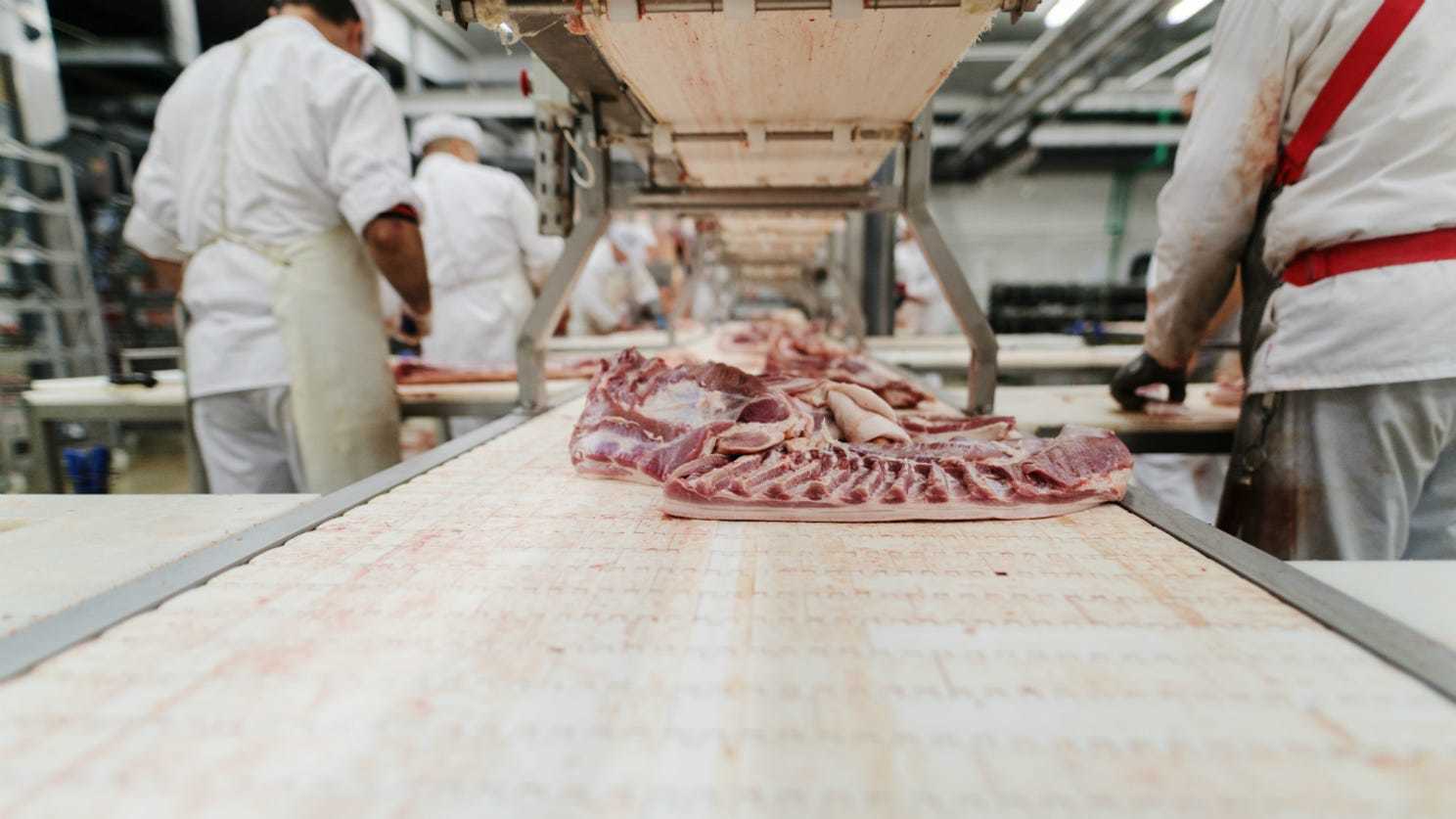
Coronavirus case counts related to meatpacking have fallen since last year amid an industrywide effort to protect workers and the more recent national vaccine rollout. But many facilities still harbor the disease.
Investigate Midwest
Covid-19 cases still a reality
Meatpacking plants seemed to be a driver of Covid-19 cases early in the pandemic.
In April and early May, counties with large populations of meatpacking workers had about 10 times as many cases than all other counties, according to a U.S. Department of Agriculture analysis. Another study pinned about 8% of all cases and about 4% of all deaths by mid-summer to the meatpacking industry.
By summertime, though, counties with and without large meatpacking worker populations began to report similar numbers, according to the USDA.
As of late, far fewer cases have been reported in meatpacking plants. JBS, Smithfield Foods and Tyson Foods, the country’s major meatpacking companies, have all said they’ve spent hundreds of millions of dollars on worker protections. Many installed plastic sheeting between workers on the line, provided masks and face shields to employees and take temperatures daily. Some have offered more generous sick leave.
When a Centers for Disease Control and Prevention team visited the plant in April 2020, it found the company had provided workers with face coverings that didn’t fit agency guidelines. At least six workers died.
When federal guidelines for preventing the spread of coronavirus in meat and poultry plants came out in April 2020, “companies immediately worked those procedures, practices and methods into their processes,” Sarah Little, a spokeswoman for the North American Meat Institute, said in a previous interview.
But the virus is still a daily reality for many workers.
In North Carolina, where nearly 4,800 workers have tested positive since the pandemic began, more than 200 cases related to the meatpacking industry have been reported in the past couple months, according to state data. At least one meatpacking worker died as recently as March.
The JBS plant in Greeley, Colorado, was one of the first facilities to close a year ago this month, bringing national attention to the plight of workers. When a Centers for Disease Control and Prevention team visited the plant in April 2020, it found the company had provided workers with face coverings that didn’t fit agency guidelines. At least six workers died.
“Given the continued spread of Covid-19 throughout the U.S., we will maintain all of our in-plant preventive measures.”
After nearly 300 workers tested positive, the state considered the outbreak resolved on Oct. 20. But, about three weeks later, new cases prompted the state to declare a new outbreak at the plant.
More than 100 workers have tested positive so far, and Colorado considered the outbreak ongoing as of March 31.
Cameron Bruett, a JBS spokesman, said about 75% of workers at the Greeley plant had been vaccinated as of early April.
“Given the continued spread of Covid-19 throughout the U.S.,” he said, “we will maintain all of our in-plant preventive measures, including mandatory mask use, free surveillance testing and social distancing, while ensuring that all of our team members are given the opportunity to get vaccinated as soon as possible.”
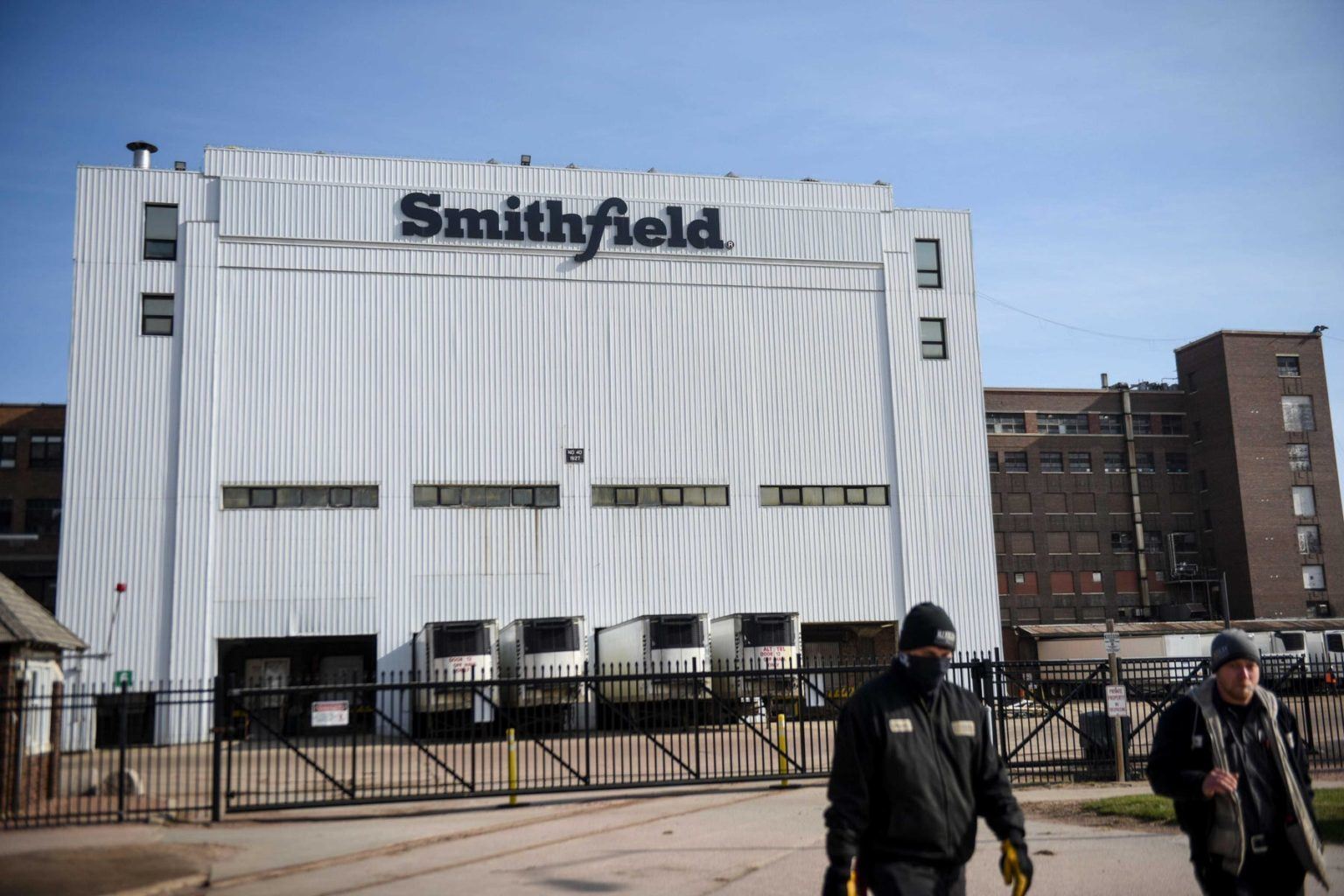
JBS, Smithfield Foods and Tyson Foods, the country’s major meatpacking companies, have all said they’ve spent hundreds of millions of dollars on worker protections.
Investigate Midwest
Many workers remain unvaccinated
Despite industry efforts, many meatpacking plant workers remain unvaccinated.
About a third of all Tyson plant workers have received the shot. In financial documents, Tyson said it paid pandemic bonuses to about 106,000 workers, and about 30,000 employees have been vaccinated, company spokesman Derek Burleson said.
As supplies become available, the company is offering free, on-site vaccinations, and employees will be compensated up to four hours if they get vaccinated outside work hours, he said.
“Active cases represent less than one-third of one percent of our workforce.”
“We take our responsibility to feed people seriously, and know that by taking care of our team members, our team members will take care of the U.S. food supply chain, from farmers and ranchers to truckers, retailers and restaurants,” Burleson said. “We will continue to do our best to stay ahead of this challenging and ever-evolving pandemic.”
At JBS, 58% of all its plant workers have been vaccinated, spokesman Bruett said, and “active cases represent less than one-third of one percent of our workforce.”
Smithfield did not say how many of its employees have been vaccinated, but spokeswoman Keira Lombardo said plants across the country were facilitating the shot’s distribution.
“This remains an active and ongoing effort at this time,” she said. “There is very low incidence of the novel coronavirus among our employees, and has been for a sustained period.”
Efforts to improve worker safety
Worker safety took a backseat during the Trump administration.
Last year, OSHA received 15% more complaints than 2019, but the agency conducted half as many inspections as in 2019, according to a February report from the labor department’s inspector general.
Many inspections were conducted virtually, a practice the inspector general said probably led to dangerous work environments.
“While remote inspections might help mitigate potential transmission of Covid-19,” the report said, “a reduction in onsite inspections could result in more worksite accidents, injuries, deaths, or employee illnesses.”
Deaths tied to meatpacking plants often went uninvestigated. By January, OSHA had not inspected 26 of the 65 plants where at least one worker had died, USA TODAY and the Midwest Center found.
“While remote inspections might help mitigate potential transmission of Covid-19, a reduction in onsite inspections could result in more worksite accidents, injuries, deaths, or employee illnesses.”
The Biden administration has taken some steps to rectify the situation.
OSHA announced on March 12 it would emphasize inspecting workplaces that put the most workers at risk of contracting the virus. A labor department spokesperson said this includes places where workers are spaced less than 6 feet apart, such as meatpacking plants.
The agency also said it would re-inspect some workplaces and prioritize on-site inspections unless they could not be done safely.
In addition to the 65 plants that have had deaths, nearly 500 plants have had outbreaks, according to Midwest Center tracking. Since mid-March, OSHA has opened up two follow-up inspections, a spokesperson said.
Caught in the middle of all this are the workers, who have continued clocking into a dangerous job made more dangerous by the pandemic.
One is an onsite inspection of an American Foods Group plant in Green Bay, Wisconsin, that had 366 Covid-19 cases, according to the Milwaukee Journal-Sentinel. And the other is a Tyson Chicken plant in Noel, Missouri, that had 371 cases, according to the Springfield News-Leader.
“Our goal is to fully investigate every complaint we receive,” the department spokesperson said. “Our updated enforcement approach better ensures that we are doing that.”
Caught in the middle of all this are the workers, who have continued clocking into a dangerous job made more dangerous by the pandemic.
Alfredo, who’s employed at an Arkansas Tyson plant and asked to be identified only by his first name to protect his livelihood, has seen firsthand the scarring of the pandemic. On top of the fast-paced work, he said, many of his coworkers have dealt with loss.
“They look destroyed,” he said.



